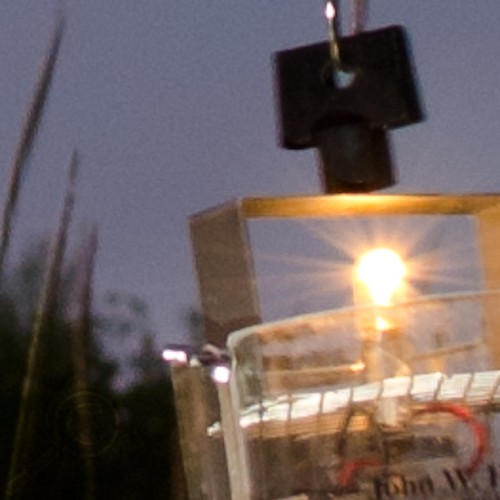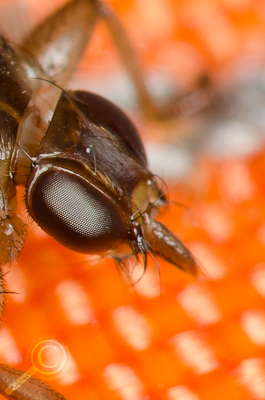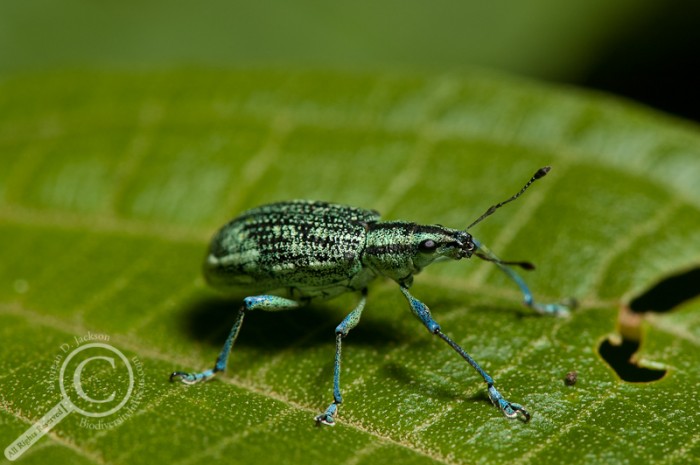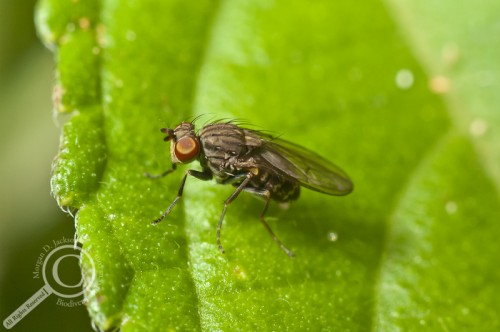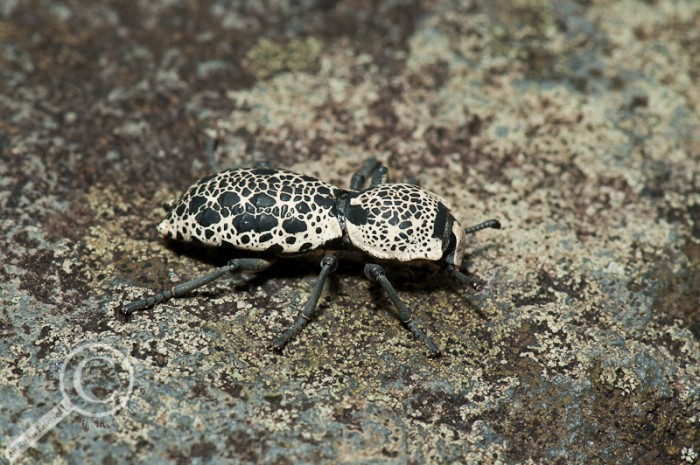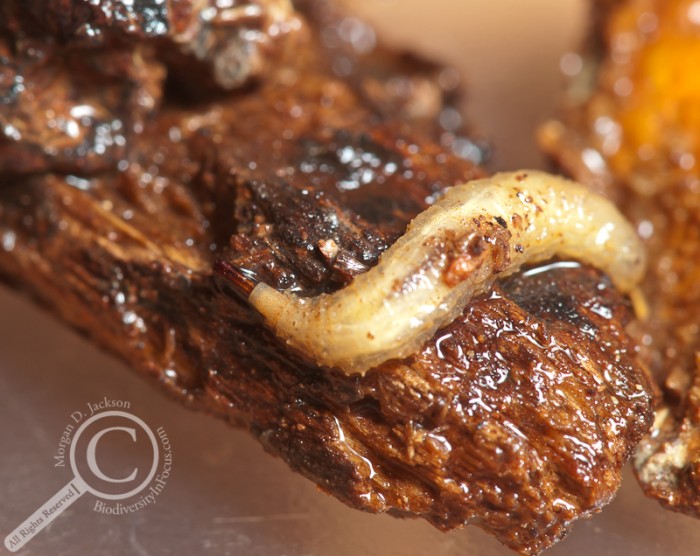You may remember I offered an ID challenge a few days weeks month ago (where did that month go?), so I figured I’d best tally some points. What was that bug-eyed beast staring out from the screen?
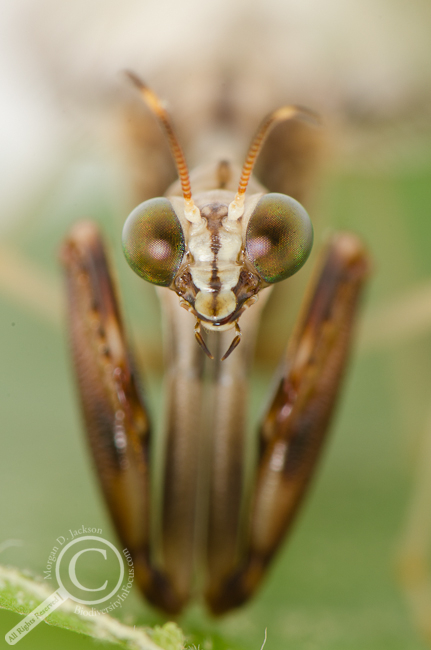
This deceiving photo may at first glance remind you of a praying mantis (order Mantodea), but is in fact the face of an insect in a totally different order; the Neuroptera. As Miles correctly deduced, this is Dicromantispa interrupta, a member of the mantisfly family (Mantispidae).
One of four species of mantisfly found in Canada, Dicromantispa interrupta is restricted to southern Ontario and Quebec in Canada (this specimen was brought back from Turkey Point Provincial Park in Norfolk County, Ontario during a recent survey), but occurs all the way down to Florida and southern Mexico and as far west as Minnesota. As can be guessed by the large eyes and raptorial front legs, adults are predatory on other insects, while larvae are parasitic in juvenile spiders. The mantisfly larvae are mobile and enter a spider’s egg sac as it’s being spun (or possibly find their way into completed egg sacs), where they await the hatching of spiderlings. Once the spiderling has hatched, the mantisfly larva will wrap itself around the pedicel (waist) of the spider until it’s next molt, at which point it will enter the book lungs and continue its development, eventually pupating and emerging from the egg sac as an adult!
There is another closely related species found in the extreme south of Ontario, and which Chris Borkent alluded to; Dicromantispa sayi. Although very similar in appearance, D. interrupta can be recognized by the brown markings at the tip of the wings and about 1/3 of the way from the tips (D. sayi has no such markings with the wing entirely clear other than the leading edge) .
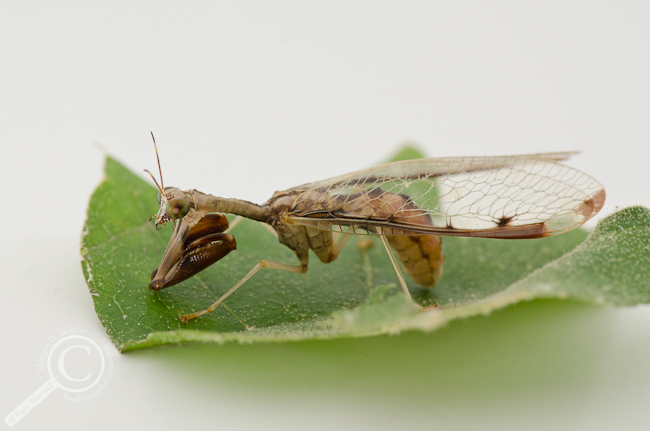
Dicromantispa interrupta (staged)
As for BioPoints, I’m giving 2 to Peter Coffey for participating and hazarding a guess on the order; Miles walks away with 15 for the correct order, family, genus and species; and Chris gets 5 for taking a chance on the other sympatric species! Thanks for playing, and I’ll try to do challenges more frequently to allow everyone a chance at getting to the magic number of 200, so be sure to check back for other opportunities!
 Cannings, R., & Cannings, S. (2006). The Mantispidae (Insecta: Neuroptera) of Canada, with notes on morphology, ecology, and distribution The Canadian Entomologist, 138 (4), 531-544 DOI: 10.4039/n06-806
Cannings, R., & Cannings, S. (2006). The Mantispidae (Insecta: Neuroptera) of Canada, with notes on morphology, ecology, and distribution The Canadian Entomologist, 138 (4), 531-544 DOI: 10.4039/n06-806
 Time to earn some BioPoints; what is this, what was it designed to do, and how does it work? I’ll be providing the answers and doling out the points next Monday, and I’ll keep comments moderated until then so everyone has an opportunity to win. Remember, humor and accuracy will both earn you points!
Time to earn some BioPoints; what is this, what was it designed to do, and how does it work? I’ll be providing the answers and doling out the points next Monday, and I’ll keep comments moderated until then so everyone has an opportunity to win. Remember, humor and accuracy will both earn you points!
